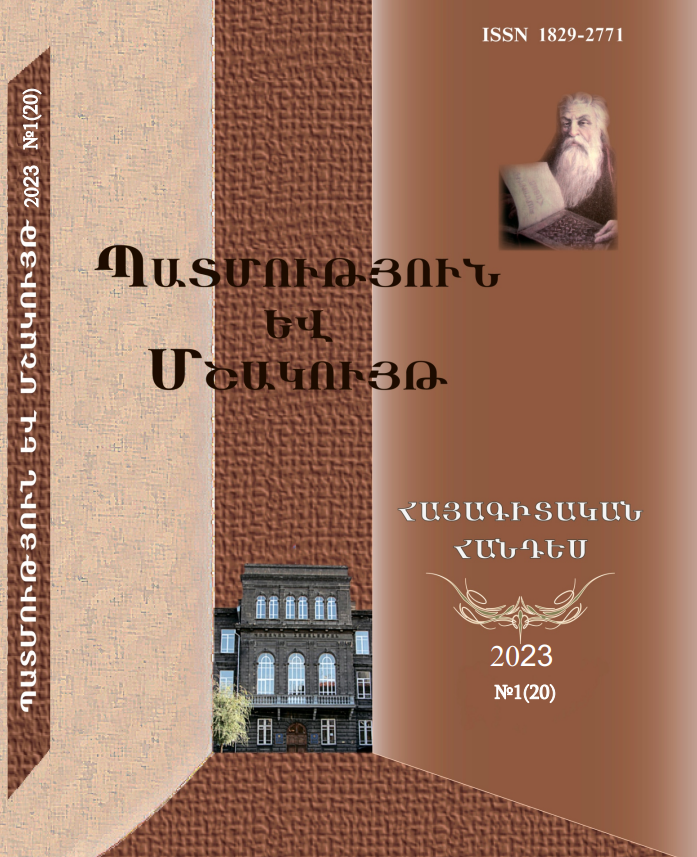Features of Using the “Mosaic” Method
DOI:
https://doi.org/10.46991/hc.2023.20.2.201Keywords:
teaching process, teaching technology, teaching method, the “Mosaic”, the principles of interactive teaching, cooperative teaching, educational and expert groups, interaction and mutual influence, self-expression, cooperation abilities, feedbackAbstract
The purpose of the study is to clearly define the “Mosaic” method, its rules, stages of implementation and features of application in a university course of the Armenian language. The objective of the study is to reveal the essence of the “Mosaic” method, the advantages and limitations of the indicated method, the pedagogical problems that arise when applying the methods and the ways of their solution.
General scientific logical, as well as the private or special methods of analysis and comparison have been used during the comprehensive study of the problem put forward within the framework of the topic.
The principles of cooperative teaching: interaction and mutual learning, students’ activities, collaboration, encouragement of self-expression and feedback create conditions for students’ activities, their motivation, self-expression, interaction and cooperation. At different stages of the “Mosaic”, i.e. at the stages of the study of material and collection of information, the work in expert and educational groups, final work and generalization, conditions are created for students’ cooperation, the exchange of thoughts and ideas, which is aimed not only at the solution of a particular educational problem, but at the development of interpersonal communication skills and the free expression of one’s own viewpoint, the evaluation of one’s own work and the work of other students, as well as the ability to appreciate what one has learned.
In expert and educational groups, the students work with each other, express their opinions, exchange ideas, being guided in their interaction rather by the principle of cooperation than by the principle of competition. Each member of the expert group realizes their educational goals and objectives with the assistance of others, simultaneously supporting them in the achievement of their own goals and objectives. In the given case, cooperation is not limited only to discussions, analysis and is organized on the basis of the principles of mutual learning, which becomes a basis for the formation and application of other principles: the principles of self-expression and feedback.
After conducting the research, we came to the conclusion that the capabilities of the “Mosaic” method contribute to a comprehensive study of the proposed material, the formation of interactive competence and cooperation, the development of expert abilities, and the fact that the student simultaneously becomes a teacher. Such limitations of the method as insufficient quantity of necessary resources, mismatch of interests, the volume of work and time can be overcome also by using other teaching techniques.
References
Հովհաննիսյան Մ., Համագործակցային ուսուցման տեխնոլոգիայի կիրառումը հայոց լեզվի բուհական դասընթացում //«Կրթությունը 21-րդ դարում», Երևան, 2023, 1(9):
Խաչատրյան Ս. Գ., Ուսուցման ժամանակակից մեթոդների կիրառումը, Գյումրի, 2006:
Slavin R. E. (1990), Cooperative learning. Review of Educational Research, Prentice Hall, Englewood Cliffs.
Elliot Aronson, https://aronson.socialpsychology.org/, դիտումը՝ 15.09.23:
Downloads
Published
Issue
Section
License
Copyright (c) 2023 Meri Hovhannisyan

This work is licensed under a Creative Commons Attribution-NonCommercial-ShareAlike 4.0 International License.

